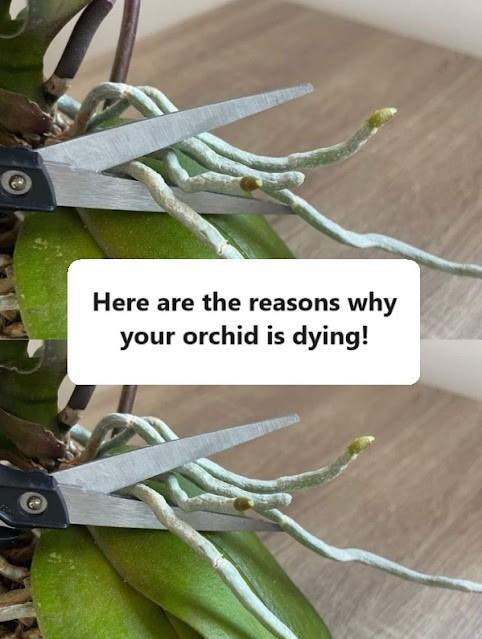Sure! Here’s an informative and engaging article based on the topic:
—
## **Here Are the Reasons Why Your Orchid Is Dying — And How to Save It**
Orchids are exotic, elegant, and surprisingly resilient—but even the most devoted plant parents often find themselves asking: *Why is my orchid dying?* Whether it’s wilting leaves, dropping blooms, or roots that look like they’re melting, caring for orchids can feel like a mystery. But the truth is, these stunning plants give plenty of signs when something’s wrong.
Let’s break down the **most common reasons orchids fail to thrive**, and how you can turn things around before it’s too late.
—
### **1. Overwatering**
**Symptom:** Yellow, limp leaves and mushy, brown roots.
This is the number one cause of orchid decline. Orchids are epiphytes, meaning they naturally grow on trees and thrive in well-ventilated conditions—not soaking wet soil. Overwatering causes root rot, which prevents the plant from taking in nutrients and water.
**Fix:**
* Let the roots dry out completely before watering again.
* Use a well-draining orchid mix (bark, moss, perlite).
* Water only when the top inch feels dry—typically once a week.
—
### **2. Lack of Humidity**
**Symptom:** Wrinkled leaves and dry, dropping blooms.
Orchids love humid environments, just like their native tropical habitats. If the air in your home is too dry, especially during winter, the plant struggles to hold moisture.
**Fix:**
* Place a humidity tray (a shallow dish with pebbles and water) beneath the plant.
* Group your orchid with other houseplants to raise ambient humidity.
* Mist the leaves lightly, avoiding the center of the plant.
—
### **3. Insufficient Light**
**Symptom:** Slow or no blooming, dark green leaves.
Too little light is a common reason orchids fail to rebloom. Orchids like bright, indirect light. If their leaves are very dark green, it may be a sign they aren’t getting enough.
**Fix:**
* Move the orchid near an east-facing window or filtered south-facing window.
* Avoid harsh, direct midday sun, which can scorch the leaves.
—
### **4. Poor Potting Medium or Drainage**
**Symptom:** Roots are brown, soft, or foul-smelling.
Orchids don’t like to sit in old, compacted medium or pots without drainage holes. This creates soggy conditions that suffocate roots.
**Fix:**
* Repot every 1–2 years with fresh orchid mix.
* Always use pots with good drainage.
—
### **5. Temperature Stress**
**Symptom:** Bud blast (buds fall off before opening) or sudden leaf drop.
Orchids are sensitive to temperature extremes. Cold drafts, heat vents, or sudden temperature swings can cause stress and kill buds or leaves.
**Fix:**
* Keep orchids in a stable environment, ideally between 60–80°F (16–27°C).
* Avoid placing them near exterior doors, heaters, or AC units.
—
### **6. Fertilizer Imbalance**
**Symptom:** Weak growth, yellowing leaves, or no flowers.
Too much or too little fertilizer can hurt your orchid. A lack of nutrients prevents blooming, while overfeeding can damage roots.
**Fix:**
* Use a balanced orchid fertilizer (like 20-20-20) diluted to half strength.
* Fertilize every 2–3 weeks during active growth (spring/summer) and less in fall/winter.
For Complete Cooking STEPS Please Head On Over To Next Page Or Open button (>) and don’t forget to SHARE with your Facebook friends
ADVERTISEMENT

